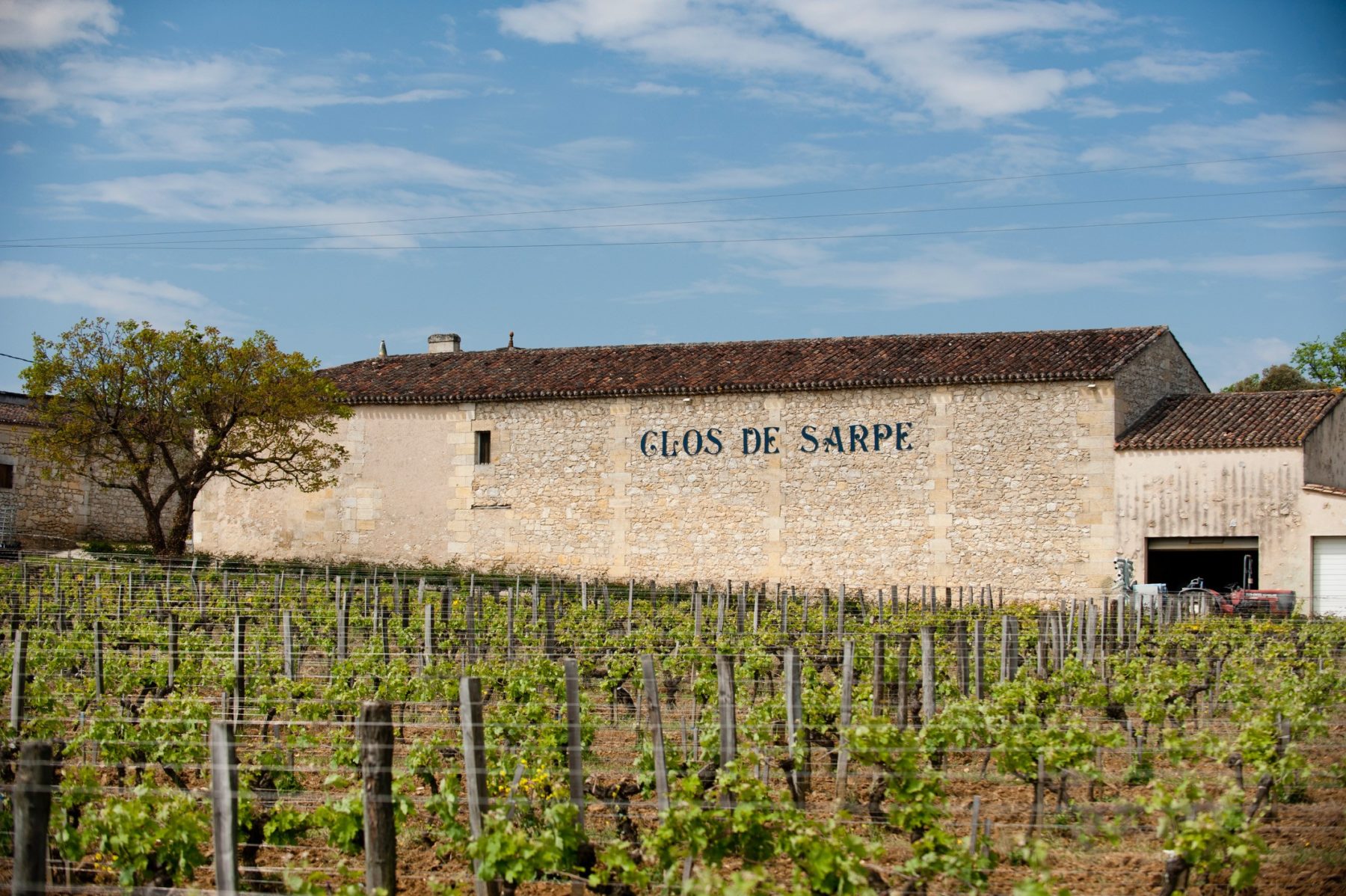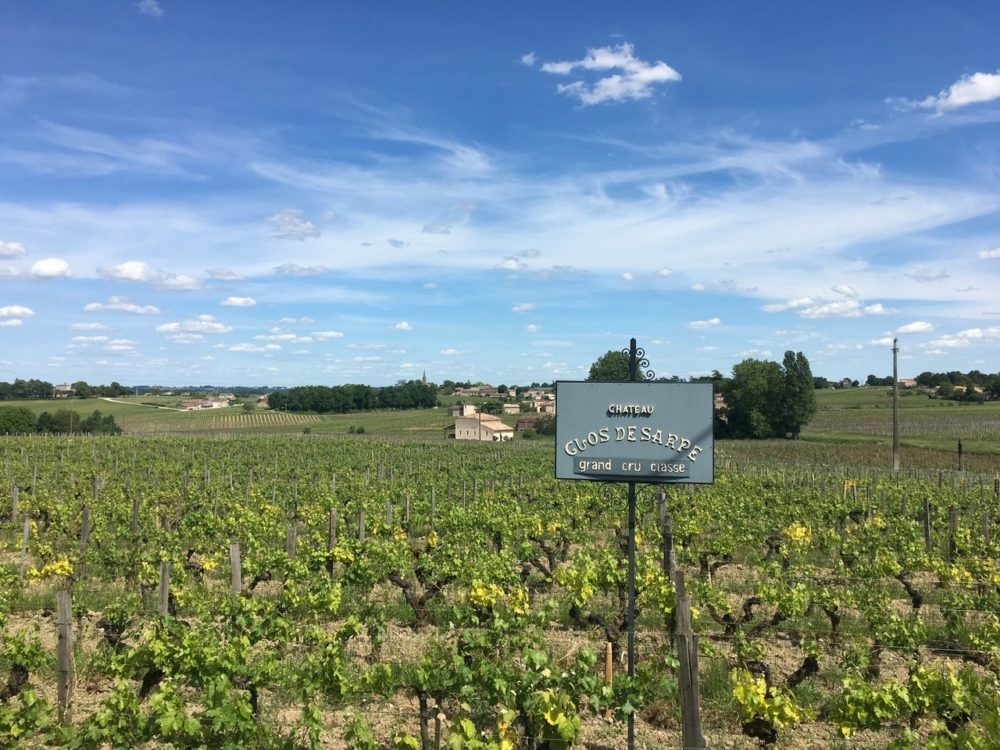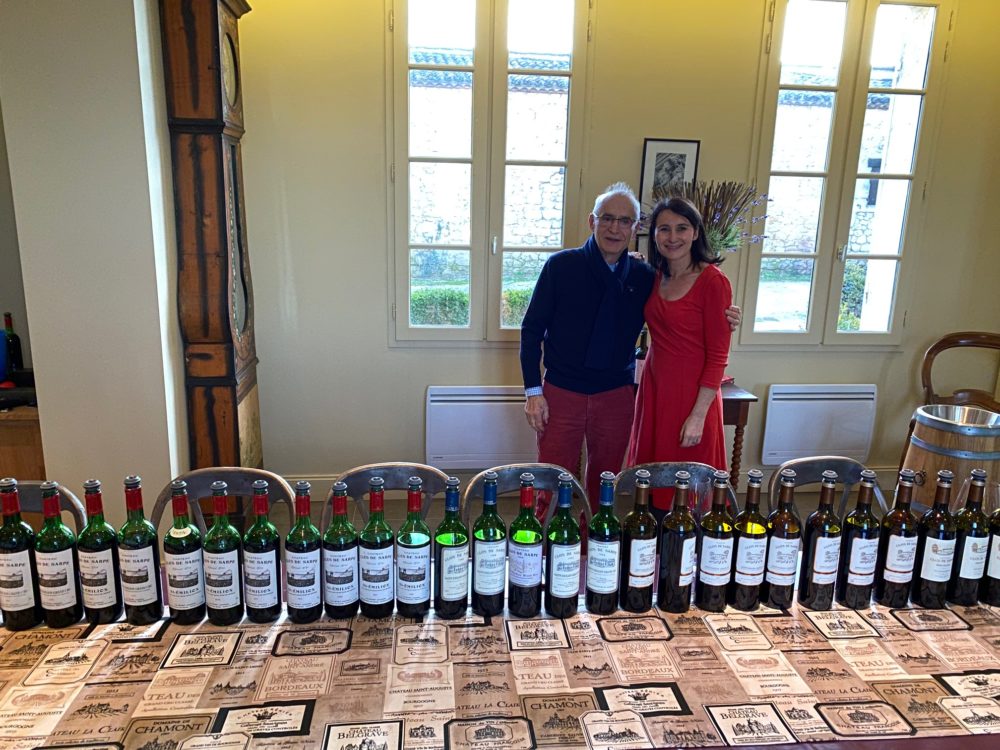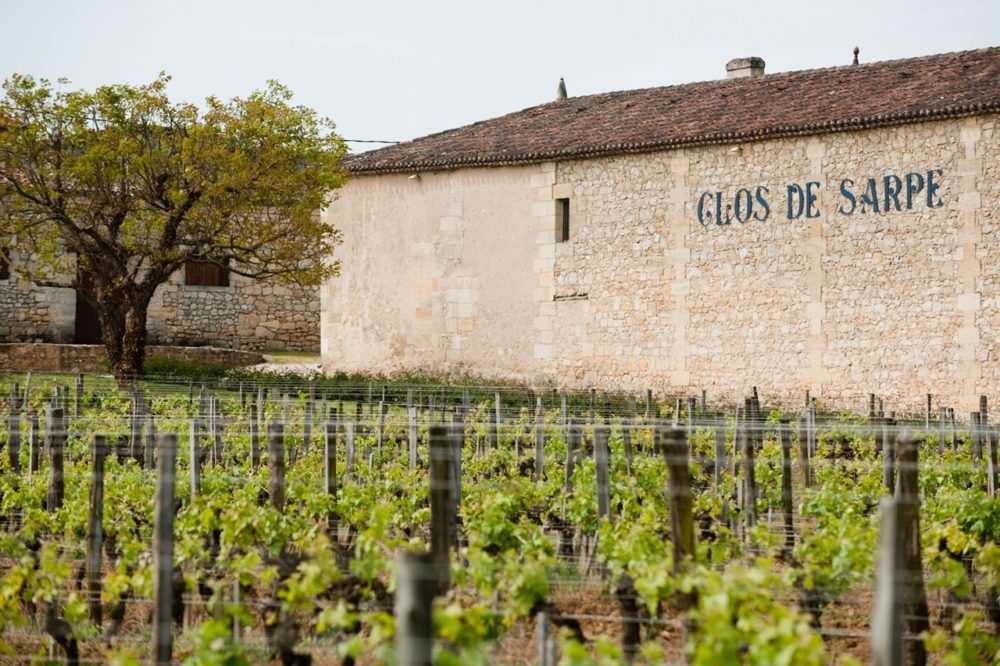
Located northeast of the village of Saint-Emilion, near the cooler Saint-Christophe-des-Bardes region, Château Clos de Sarpe covers a tiny 3.7 hectares (just over 9 acres) of the south-sloping Sarpe Plateau and consists of the classic Saint-Emilion upper plateau terroir of thin clay over limestone soils. The estate has been in the Beyney family for three generations, with Jean Beyney purchasing the property in 1923 and making the wines until 1950. Jean’s son made the wine from 1950 to 1986, and his son, Jean-Guy and his wife Christine have managed the property since 1986. Jean-Guy’s niece, Maylis Marcenat, is also heavily involved in every aspect of the estate, including the management of the commercial and marketing sides of the business. Château Clos de Sarpe is undoubtedly a tiny, insiders’ estate that deserves more recognition in the market today.
Looking at the vineyard, this is a contiguous parcel planted to 85% Merlot and 15% Cabernet Franc, with a vine density of 5,500 vines per acre. The soils here are roughly 20 inches of rich, iron-laced clay over deep, pure limestone, which contributes to the freshness and low pH of the final wines. The majority of the vines were planted in the 1940s and 1960s. Today, the estate boasts some of the oldest vines in Saint-Emilion. The farming is all organic (and biodynamic today, although they chose not to be certified), and yields are kept to a brutal 25 hectoliters per hectare or less, which is another critical component to understanding these wines.
This incredible retrospective took place at the estate in January of this year and covered the 1950s through the current day wines. Looking first at the wines made by Jean-Guy’s grandfather, spanning from 1923 to 1950, these were made with little in the way of sorting or selection, were not destemmed, saw a massive 40- to 50-day maceration, and a crazy 4-5 years in concrete tanks before being bottled. While I wasn’t alive at the time and can only speculate, I suspect the resulting wines were massive and tannic, and most likely undrinkable in their youth. The vineyard naturally produces a very low pH wine (most are between 3.2 and 3.4), and the wines have unquestionably aged beautifully with this extended maceration and élevage, resulting in incredibly stable, age-worthy wines. While some still have a tannic bite, they have impressive depth of fruit and richness pared with a terrific sense of freshness. I was surprised at the quality as well as the consistency in these older vintages. Even difficult vintages such as 1970, 1973, and 1974 showed impressive complexity, balance, and length. All the wines were alive and well, and I suspect they will have a gradual decline. As is always the case with older wines, provenance is critical. The standouts in this era were the 1952, 1966, 1978, and 1983.
The style shifted slightly in 1986 with Jean-Guy taking over from his father. At this point, Jean-Guy began partially destemming the grapes and also gradually reducing the aging from 4-5 years down to roughly 18 months or so in concrete tanks. While tasting through the retrospective, these wines show slightly more fruit and richness as well as precision. The 1986, 1988, and 1989 all showed brilliantly, with fully mature, complex, almost Burgundian styles. Despite the subtle changes, the style is relatively consistent from the 1950s up through the mid-1990s.
The style of the wines changed dramatically in the late 1990s. While not part of this retrospective, the 1997 is the first wine of the domaine to be partially destemmed (by hand), and it’s also the first wine to see any barrel aging, being brought up in equal parts concrete tank and new French oak. To further lift quality, a second wine, the Charles de Sarpe, was introduced in 1997 as well.
The estate brought on Michel Roland as a consultant in 1998 and began aging the wine in 100% new French oak at that time. Following multiple older vintages aged all in concrete tank, the 1998 shows clear signs of its oak élevage yet still has the richness pared with a sense of freshness that’s the hallmark of this estate. The oak also becomes better integrated from this point, and despite the wines being brought up in plenty of new barrels, the oak élevage never dominates the wine.
While there were few changes through the early 2000s, the estate purchased a mechanical destemmer in 2005 and implemented a more strict sorting regime. From 2005 on, the wines take a clear step up in quality and show more polish and elegance as well as ripe, structured profiles on the palate. Today, the wines are completely destemmed and see an extended maceration in concrete tanks. Malolactic fermentation and aging take place in roughly 70% new French oak barrels.
.
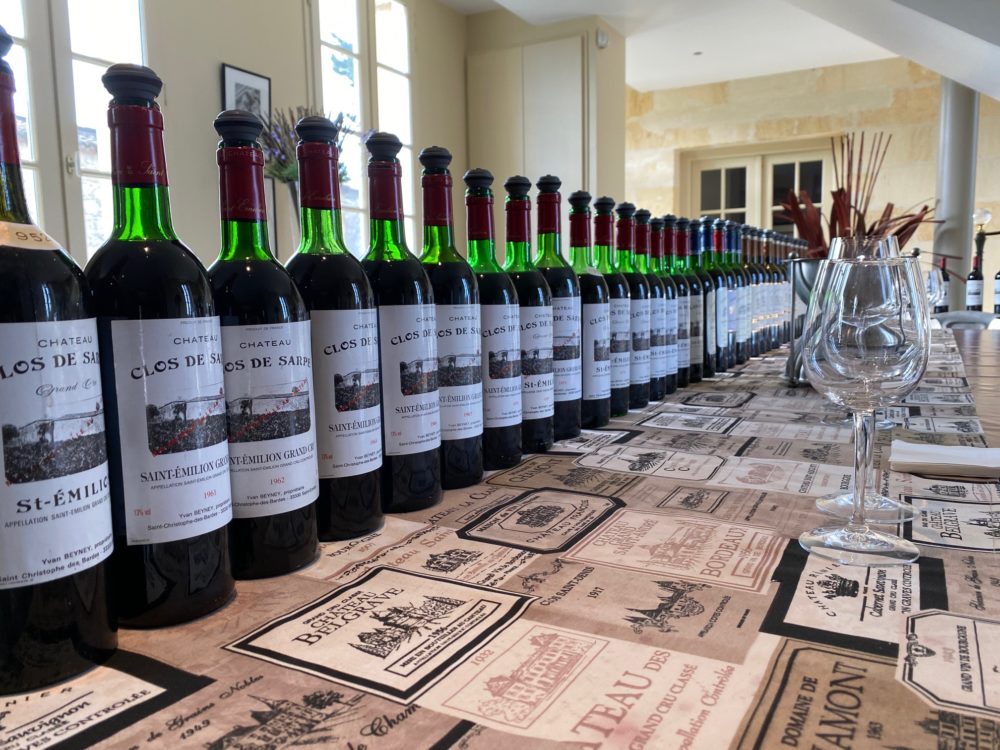
Key points:
- Château Clos de Sarpe is a tiny, family-run estate that produces roughly 1,000 cases or less of every vintage.
- The vineyard lies on the upper, limestone plateau east of Saint-Emilion, in a cooler region near Saint-Christophe-des-Bardes, and is planted to 85% Merlot and 15% Cabernet Franc.
- The vineyard is farmed organically and consists of very old vines and naturally produces a low pH wine. While most Right Bank wines hover in the 3.5-3.8 pH range, most vintages of Clos de Sarpe are under 3.5 pH.
- The estate favors low yields and long macerations. While older vintages were aged mostly in concrete tanks, the wines see malolactic fermentation and aging in primarily new French oak today.
- While I suspect older vintages needed lots of bottle age to drink well, today’s wines are approachable and polished on release, while still showing the concentrated, structured yet fresh style of the estate.
- These are age-worthy wines that will have broad drink windows.
As I hope these reviews show, this brilliant, gem of an estate fashions singular, incredibly age-worthy wines that are well worth seeking out and cellaring.
– Jeb Dunnuck
